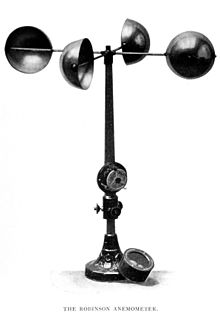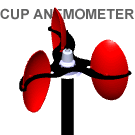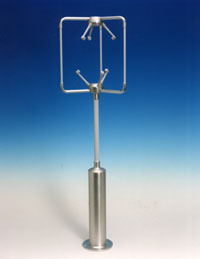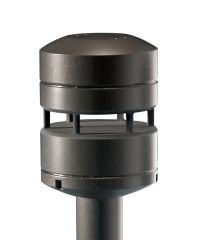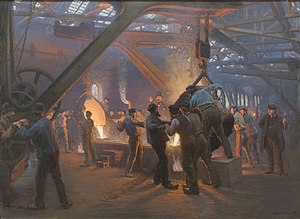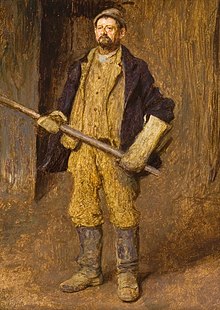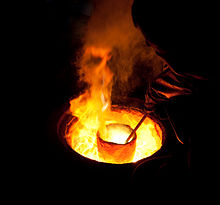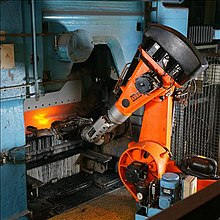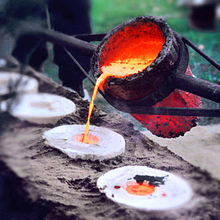The CIA Tibetan program was a nearly two decades long anti-Chinese covert operation focused on Tibet which consisted of "political action, propaganda, paramilitary and intelligence operations" based on U.S. government arrangements made with brothers of the 14th Dalai Lama,
who was not initially aware of them. The goal of the program was "to
keep the political concept of an autonomous Tibet alive within Tibet and
among several foreign nations".
Although it was formally assigned to the CIA, it was nevertheless
closely coordinated with several other U.S. government agencies such as
the Department of State and the Department of Defense.
Previous operations had aimed to strengthen various isolated
Tibetan resistance groups, which eventually led to the creation of a
paramilitary force on the Nepalese
border consisting of approximately 2,000 men. By February 1964, the
projected annual cost for all CIA Tibetan operations had exceeded US$1.7
million.
The program ended after President Nixon visited China to establish closer relations in 1972. The Dalai Lama criticized this decision, saying it proved wholeheartedly that the US never did it to help the people of Tibet.
Overview

In the fields of political action and propaganda, the CIA's Tibetan
program was aimed at lessening the influence, capabilities, and
territorial scope of the Government of China.
Particularly, the United States feared communist involvement in the
region. A 1957 report on logistical issues indicated increasing
trepidation that the Chinese would escalate their communist presence in
Tibet.
The spread of communism in the international community was a huge
concern for the United States. The CIA considered China's interest in
Tibet to be a threat for multiple reasons. A 1950 memorandum noted that
some of the reasons stemmed from a notion of bolstered sovereignty and a
motivation to forge "a bulwark against possible invasion by western
powers via India." However, they also believed that China would "use
[Tibet as] a base for attacks against India and the Middle East in the
third world war." Therefore, intelligence officials declared action as a
preventative measure should their worst-case scenario (WWIII) unfold.
The approval and subsequent endorsement of the program was carried out by the Special Group of the United States National Security Council. The program consisted of several clandestine operations bearing the following code names:
- ST CIRCUS—Cover name for the training of Tibetan guerillas on the island of Saipan, and at Camp Hale in Colorado
- ST BARNUM—Cover name for the airlifting of CIA agents, military supplies, and support equipment into Tibet.
- ST BAILEY—Cover name for a classified propaganda campaign
Chinese-Indian relations also played an important role in framing
the CIA's operations. Due to Tibet's geographic location between the
two countries, it was strategically important. The CIA released numerous
reports assessing relations. The CIA monitored the relations between
China and India in various ways, including media such as newspapers and
radio broadcasts that reported on the changing relations between India
and China.
In October 1954, for example, a report was filed by CIA analysts
concerning Indian Prime Minister Pt. Jawaharlal Nehru's visit to China.
It assessed what the two countries might or might not agree to from a
diplomatic standpoint.
Following the month-long Sino-Indian War of 1962, the CIA developed a
close relationship with Indian foreign intelligence services in both
training and supplying agents in Tibet.
The CIA worked to strengthen the Tibetans against the Chinese
communist efforts. To do so, the United States planned to issue asylum
to the Dalai Lama and his supporters. Some resistance fighters took
their own lives when captured by the Chinese to avoid torture. The
Tibetan resistance was promised weaponry and resources from the West to
continue their resistance against the Chinese. Knowing resistance was
unlikely to succeed the resistance accepted Chinese annexation.
History
The Chinese army launched an invasion on the Tibetan capital of
Lhasa, codenamed Operation Chamdo, in October 1950, thus solidifying the
origin of the tension between China and Tibet.
With this tension came Tibetan resistance towards China and the United
States' interest in helping them fight the Chinese communist forces. In a
memorandum from July 1958, the CIA described the growing resistance to
the Chinese in Tibet. The memo noted, "During the past two and one half
years, resistance has hardened and grown despite Chinese countermeasures
that include military force as well as partial withdrawal of Chinese
cadres and postponement of 'reforms' and other programs leading toward
socialization" In the early 1950s, the CIA inserted paramilitary teams from the Special Activities Division (SAD) to train and lead Tibetan resistance fighters against the People's Liberation Army
of China. The Tibetans were willing to fight the Chinese, as they
shared the CIA's interests in stymieing the influence of communism from
China on Tibet. The Tibetan people started to form anti-Chinese protests
under the influence of the Dalai Lama.
However, the government of Tibet did not encourage such anti-Chinese
protest. The reasons behind the Tibetan people's motivation for the coup
was because they perceived the Communist party, especially the Chinese,
to be a threat to their religion: Buddhism the religion of Tibet is a form of Buddhism known as Vajrayana.
The most significant facet obstructing Chinese Communists from
successfully infiltrating Tibet was its strong societal structure. The Ganden Phodrang
led by the Gelugpa sect of Tibetan Buddhism was the governing political
authority in addition to being the most powerful philosophical school.
Tibetan polity was known as a theocracy. Monasteries historically tried
to create peace and understanding between the people who gave them the
power of mass ideological guidance.
Gyalo Thondup, the Dalai Lama's brother, was exiled to India and
initiated contact with the Americans. Gyalo reached out to the Americans
who were intrigued with the opportunity to create a ‘running sore for
the reds,’ as a part of its global anti-communist campaign. These
contacts made by the Dalai's brother eventually led to a more than 2
decade long campaign against the Chinese government supported by the
CIA.
His American contacts enabled Tibetans to go over first to Saipan and
then to the U.S. for training. They were trained for 5 months on combat
maneuvers. These teams selected and then trained Tibetan soldiers in the Rocky Mountains of the United States; as well as at Camp Hale in Colorado. The SAD teams then advised and led these commandos against the Chinese, both from Nepal and India. In addition, SAD Paramilitary Officers were responsible for the Dalai Lama's
clandestine escape to India, narrowly escaping capture by the Chinese
government. The Dalai Lama had also gotten very ill during the journey
and almost did not make it to India.
1951
On May 23,
1951, Tibet and China signed the Sino-Tibetan agreement, allowing China
to station troops in Tibet as well handle its international affairs.
In exchange, the Chinese would not alter or affect the current
government in Tibet, nor affect the status and authority of the Dalai
Lama and Panchen Lama. In October 1951, 12,000 troops from the PLA
entered Tibet. Initially, China wanted to send 45,000 troops, but Tibet
refused the request, threatening to send the Dalai Lama to India if
their refusal was not respected. However, the Tibetans were convinced
the Chinese forces in Tibet were not capable of pressing the issue at
the time.
The composition of the 12,000 soldiers that were sent included 10,000
infantrymen, an animal transport battalion, a battalion of army
engineers, and approximately 50 technicians who specialized in the areas
of geology, surveying, telecommunications, cultural, propaganda, and
party affairs.
Additionally, violence directed toward the Tibetan people originated
from Beijing. According to an archive document from the National
Security Archive at the George Washington University, "Beijing has
pursued...suppressing violent protests, arresting scores of ethnic
Tibetans in the Qinghai province, which borders Tibet, sentencing one to
prison for 13 years, and renewing accusations that the Dalai Lama is
encouraging anti-Beijing actions."
A memo distributed by the CIA on November 20 detailed that the
Chinese military, as of October 10, 1951, had arrested over 200 Tibetan
people (29 women) for refusing to sell supplies along with desecrating a
monastery (Gatza Monastery) in search of weapons. The Chinese military
utilized various propaganda to establish a campaign of pacification to
suppress growing resentment held by the Tibetan people over Chinese
subjugation.
In December, the CIA distributed a report regarding the
activities of PLA troops in Tibet. The report contained details
regarding new troop activity in Tibet, troop movement, and the PLA's
plan to construct a highway connecting Tibet and China. In addition to
the information mentioned above, the report outlined China's plan to
relocate the Panchen Lama back into Tibet, create military ties between
China and Tibet, and build military training facilities within Tibet by
March 1952.
1952
The State
Department received communication from Thondup in May that revealed an
assortment of information concerning the situation in Tibet. The CIA
used the line of communication with Thondup to cultivate a credible
source of intelligence on the ground and administer possible operations
moving forward. Thondup described mounting Tibetan hostility toward the
occupying Chinese Communist forces and the recent armed conflict in
Lhasa between Tibetan demonstrators and Chinese Communist military
police. From the intelligence, the CIA learned of the 10,000-15,000
Chinese troops stationed in Tibet. A dire food shortage also exacerbated
tensions as Tibetans found it increasingly difficult provide food for
the people. Furthermore, the communication with Thondup revealed the
workings of covert actions from Tibetans who refused to follow the Dalai
Lama's acceptance of Chinese Communist occupation. The CIA and the
State Department both expressed optimism with the circumstances in Tibet
and Lhasa, believing that they could maneuver accordingly.
In September 1952, a CIA intelligence report noted the difficulty
in continuing to support the Tibetan resistance when the Chinese
Communist government and the massive People's Liberation Army (PLA)
fully occupied the country. As a result of this Chinese domination over
the Tibetans, direct diplomatic relations between Tibet and India
ceased. A daily Hindi newspaper reported that this move had ended 16
years of direct contact between the governments of India and Tibet.
India was able to have direct communications until that point because
China's authority in Tibet was still limited. In the final paragraph of
the article, the newspaper writes, "The Chinese occupation of Tibet a
year ago has changed this relationship. The cause was inevitable, and
India had no choice but to accept this arrangement because the Chinese
Communists now have complete control of the foreign affairs of Tibet".
Previously, India had provided a link for United States' support to the
Tibetan resistance.
Later that year (December 1952), the CIA produced an Information Report
(Classification: Secret) containing two items in the subject line: 1)
Anti-Communist Activities, Tibet, and 2) Chinese Communist Activities,
Tibet. The document shows that the agency was closely scrutinizing both
Tibetan and Chinese groups and individuals at the time, as well as any
other obtained intelligence. The report defines the anti-Communist
Tibetan People's Party and identified geographic areas where the Party's
support was strongest. A 36-year old leader, Lhopto Rimpochhe was named
as the leader of the "warrior monks." The document goes on to report on
intelligence regarding a petition sent to the Chinese authorities in
Lhasa by Ragashar Shape, Tibetan Defense Minister,
that went ignored. The Shape petition included the following points:
the Dalai Lama should continue to rule unchallenged; monastery estates
should not be confiscated; Tibetans should thank the Chinese for
liberation but kindly ask them to leave and, in return, the Tibetan
people would never ask for military assistance from the Chinese; and
persuading the Chinese to "please buy the [Tibetan] wool." The document
then proceeded to provide intelligence on various undesired actions
taken by the Chinese including forcing the Dalai Lama to give a speech
the threat of death, kidnapping over 200 children for the purpose of
retraining them (one was even beheaded as a warning to the others not to
cry and complain), and the installation of a puppet governor at Kham.
Next, the document listed nine names of Tibetans acting as informers
against the Chinese. Lastly, Chinese forces in Tibet were
addressed—numbers of troops, names, and leadership transition
information.
1953
By February
1953, the Chinese government was attempting a military build-up in
Tibet. Airfields could specifically be an advantage as Tibet could then
be used as a refueling station between China and India allowing for
China to fly extended combat missions over India and target its northern
cities. Additionally, as the highest geographical point, Tibet could
maintain an aerial advantage over the region. A CIA information report
dated July 31, 1953, reveals the CIA was closely monitoring Chinese
projects in Tibet. The report notes that earlier that year Chinese
soldiers "attempted to build airfields at Lhasa," the capital of the
Tibet Autonomous Region, and Gartok, now called Gharyarsa. However, the
Dalai Lama disapproved of the project, and the soldiers ceased
construction of the airfields. In May 1953, over 1,000 Chinese soldiers
marched to the Chumbi Valley with five field artillery pieces. These
soldiers increased Chinese presence in Tibet to approximately 20,000
soldiers—all mainly stationed in Chumbi Valley, Bartok, Rudog, and north
of Lhasa.
In October 1953, the Chinese government placed travel restrictions in
Tibet, resulting in a substantial westwardly diversion the wool trade.
Concurrently, the Chinese were using Tibetan labor to create new
roadways that would be controlled by the Chinese, which resulted in the
Chinese controlling nearly all travel within Tibet. In December 1953 China communicated to the Indian Ambassador their position on Tibet;
the Chinese gave nine demands to the Indian Ambassador. Their demands
included that they do not tolerate any further Indian interest in Tibet
and that no objection must be made by India to Chinese construction of
fortifications in Tibet near the Indian and Nepalese borders. Another of
the demands stated that India must have a strong policy to abolish
illegal activities of foreign agents working on the Indian side of the
border.
1954
In April
1954, after four months of negotiating, India and China agreed to the
Sino-Indian Treaty. This treaty discussed how China would not allow the
continuum of interest in Tibet by India. The Indian borders were to be
equal between Tibet and border people. India was to devise a robust
policy targeting illegal activities in the border areas. Civilians and
soldiers were to be left alone when crossing the border into Nepal.
Finally, India was not allowed to support any person that may question
the sensitive issue of Tibet to the United Nations (UN).
China allowed India to retain their three trade agencies in Tibet in
exchange for three trade agencies for China in India while also allowing
India to maintain three trade posts in Tibet at Yatung, Gyantse, and
Gartok. In exchange, India was to allow China to keep three trade posts
in New Delhi, Calcutta and Kalimpong.
The borders were opened for those who wished to visit religious
shrines, but China ordered India to withdraw armed forces. China also
ordered India to hand over postal, telegraph, and telephone facilities
it had been operating in Tibet.
A group of Kazakhs were invited to the Tibetan capital of Lhasa to
discuss the political status of the group. The trade between Tibet and
China started really strong.
China positively influenced the Tibetan economy by introducing silver
dollars to Tibet. The products were generally unloaded in Tibet by
plane, and from there they were taken on a camel caravan. Tibetans
typically utilized camels during cold weather. However, horses, mules,
and donkeys were also used to transport products in fair weather.
1955–1957
In
1955, a group of local Tibetan leaders secretly plotted an armed
uprising, and rebellion broke out in 1956, with the rebels besieging
several Chinese government agencies, killing hundreds of Chinese
government staff, and killing many Han Chinese people.
In May 1957, a rebel organization and rebel fighting force were
established and began exterminating communist officials,
discombobulating communication lines, and bombarding institutions and
Chinese army troops deployed in the region.
This coincides (chronologically) with the creation of the Preparatory
Committee for the Tibet Autonomous Region, an organization created to
help the Chinese undermine the religious and political systems of Tibet. The Chinese bombed an ancient monastery in February 1956, killing thousands of monks and ordinary citizens.
The Tibetans knew that they could not fight off the Chinese on their
own so they called in help from an outside source. It was in the shared
interest of both Tibet and the United States to limit the power of the
Chinese within Tibet's borders. Americans thought that this would be a
great opportunity to prevent the spread of Communism throughout
Southeast Asia. Starting in 1956, the CIA initiated a large scale
clandestine operation against the communist Chinese. During December 1956, the Dalai Lama had left Tibet to attend a Buddhist celebration in India.
A briefing for the DCI from 1959 mentions that "as far back as
1956, we began to receive reports indicating the spread of Tibetan
revolt against Chinese communists through areas inhabited by Khamba
tribes in eastern Tibet." By May 1957, a rebel organization with its own fighting force was established with the support of the CIA.
This was the first time that many Tibetans had seen a white man in
person. They subsequently received training for the next five months.
Some of the things that they learned while training included the use of
modern weaponry, guerrilla tactics, espionage, codes, and operation of
hand-cranked radio transmitter/receivers. Tibetans took this training
very seriously and can be quoted stating that they "lived to kill
Chinese."
Because they viewed Chinese as a direct threat to their religion, they
viewed animal life as more sacred than the life of the Chinese
communists against whom they rebelled.
In late 1958, in a Spartan-like setting nestled 10,000 feet above sea
level in the Rocky Mountains of Colorado, the CIA trained more Tibetans
at Camp Hale with a total of 259 Tibetans trained over five years in
tactics representative of guerrilla warfare.
The CIA established a secret military training camp called Camp Hale,
located near Leadville, Colorado, where the Tibetans were trained to
sabotage operations against the Communist Chinese.
One of the reasons for the location of Camp Hale was its
elevation—10,000 feet above sea level. The altitude preference was
thought to mimic the terrain and climate of the Himalayas. The camp shut down in 1966, despite the conclusion of program training occurring already in 1961.
1958–1960
In 1958, with the rebellion in Kham ongoing, two of these fighters, Athar and Lhotse, attempted to meet with the Dalai Lama
to determine whether he would cooperate with their activities. However,
their request for an audience was refused by Lord Chamberlain, Phala
Thubten Wonden, who believed such a meeting would be unwise. According
to Tsering Shakya, "Phala never told the Dalai Lama or the Kashag of the arrival of Athar and Lhotse. Nor did he inform the Dalai Lama of American willingness to provide aid".
The situation in Tibet by the late 1950s revealed a strategic and
economic interest in maneuvering against the Chinese Communists.
Providing aid to the Tibetans continued to occur in the reports flowing
in and out of the CIA. Several reports documented the economic needs of
Tibetans and compared them to the known resources of the Chinese
Communists in the Tibetan Army District. Control of the few networks of
roads traversing the mountainous terrain granted the Chinese Communists
access to the resources they needed to sustain military occupation. This
was problematic for the Americans who needed a way to provide any aid
to the Tibetan resistance movements. However, the reports weighing the
logistics and costs of supplying aid to the Tibetans revealed that
American interests were fueled by opposition to the Chinese Communists
rather than a support of Tibetan liberation. The report ultimately
concluded that the economic effort required to support troops in Tibet
would only have a "modest if not almost negligible impact on the economy
of Communist China."
In Eastern Tibet, there was a Khamba tribe that was thought to be
in active resistance against the Chinese communists. These rebels
displayed a sizeable outbreak in March 1959 because they feared that the
Chinese were planning to take the Dalai Lama from the country.
Since they had feared he risked kidnapping, they decided to protect him
by moving him to an area that was located just outside Lhasa. These
rebels claimed an "independent kingdom of Tibet" when they decided to
resist the Chinese outpost.
To try and get the rebels to back down the Chinese attempted to kidnap
the Dalai Lama, leading, in turn, to the 1959 Tibetan Uprising in which
thousands took to the streets to stop the supposed kidnapping. A 1959
DCI briefing highlights the measures in which citizens took to protect
the Dalai Lama. The report says, "Thousands of Tibetan demonstrators
then took the Dalai Lama into protective custody in his summer palace
just outside Lhasa".
Chinese military forces killed tens of thousands of Tibetans along with
thousands more fleeing behind the Dalai Lama. During this revolt,
supporters were reported to have "knocked out a Chinese outpost manned
by 80 soldiers, interrupted communications with Peiping, and plastered
walls of Lhasa with posters declaring 'independent kingdom of Tibet.'" The Chinese attempted to make the Dalai Lama stop the uprising, but they could not, which then led to his flight to India.
The Dalai's clandestine departure to India started on March 17, 1959,
involved him wearing a disguise where he dressed as a soldier and moved
with a column of troops to the Indian border. Resistance fighters
smuggled him out of the Potala and through rebel-held territory. Two
troops who met the Dalai's escort along the way were trained by the CIA
and they reached back to their American contacts via radio to secure
permission for the Dalai and his troops to enter India. Permission was
granted.
Prior to his flight to India (due to shots being fired outside the
palace), Dalai and the Tibet representative were sending letters back
and forth to each other in hopes of avoiding an attack. Dalai continued
fighting for independence for Tibet outside India. Finally, with the
hope of halting Chinese aggression and demands, India recognized Tibet
as part of China.
In 1959, the Dalai Lama and approximately 100,000 followers fled to India and Nepal. The rebels continued to attack Chinese government officials, disrupting communication lines, and targeting Chinese troops. Following a mass uprising in Lhasa in 1959 during the celebration of the Tibetan New Year and the ensuing Chinese military response, the Dalai Lama went into exile in India.
At this point, the Chinese began changing their policy of working
through institutions to build the Communist Party in Tibet. They began
to replace the government with Communist-sponsored leaders. By this
time the rebels were under constant Chinese attack and losing the
remaining ground that they controlled.
A declassified DCI briefing of the Senate Foreign Relation Committee
offered some further elaboration on the Dalai Lama's position in India.
The Dalai Lama remained insistent on wanting to establish a free Tibet
which threatened his asylum in India. Prime Minister Nehru vowed to
protect the Dalai Lama's right to practice his spirituality but would
not condone any anti-communist politics coming from the Dalai Lama.
Nehru's main reason for this was that India had previously recognized
Tibet as a part of China. The evidence seemed to imply that popular
Indian sentiment and reactions to this policy caused Nehru to become
more sympathetic toward Tibet, yet unfortunately the rest of this
section was redacted from the public record.
From 1959 to 1960, the CIA parachuted four groups of Camp Hale
trainees to meet up with the Tibetan resistance. In Autumn of 1959, the
CIA parachuted the second group of sixteen men into Chagra Pembar to
meet up with the resistance. By January 1960 the CIA parachuted the
fourth and last team into Tibet. Along with these air drops, the CIA
also provided pallets of lethal aid to the resistance including rifles,
mortars, grenades, and machine guns.
All the CIA trained Tibetans from Camp Hale left with personal
weapons, wireless sets, and a cyanide tablet strapped onto each man's
left wrist.
The resistance movement did accomplish the job of bringing great
cost and distraction to the Chinese government. CIA estimates in 1959
were that the Chinese had around 60,000 troops in Tibet and needed 256
tons of supplies daily. Due to there only being 3 viable transport
routes into Tibet,
the CIA also estimated that if they could get the Chinese to double the
needed supplies, then the existing infrastructure would not be able to
keep up with supply without supplementary airlifts or construction to
repair existing routes. The CIA estimated that even with these
supplemental airlifts, it would cause substantial disruption in other
air services and the Chinese could not expect to supply double its
commitments long-term. The Lanzhou-Lhasa highway
was the ideal logistical land supply route at 2,148 km long. The CIA
took into consideration factors including road construction, width,
grades, curves, bottlenecks, and road conditions impacted by weather.
The CIA estimated China could support up to 90,000 troops in Tibet for a
few months, but only 60,000 for an extended deployment. In order to
support 90,000 troops in the region, China would have to use the
Lan-chou-Lhasa highway to its capacity and would require around 7,000
supply trucks per month. However, such heavy usage of the road was
estimated to cause substantial damage.
The CIA also considered how a build-up of Chinese troops would affect
the railroads and determined that, although congestion could impose some
burden on the supply chain, there would be no significant effect on the
lines. However, if one of the lines failed due to a washout or other
reason, supplies would have to be trucked into the staging areas, which
the CIA determined would be a time-consuming operation. Petroleum usage
in Tibet was estimated at 2.7% of China's total availability, with a
total usage of around 200,000 tons for the year.
The "blue satchel raid" of the Chinese was considered one of the
greatest intelligence hauls in the history of the CIA. This raid
obtained Chinese government documents that showed them having trouble
moving forward with the spread of communism through Tibet. It also gave
the CIA good insight into what was going on in China, and for the first
time, they possessed authentic Chinese documents that were not forged
or given to them by a rogue agent. This changed the focus of the CIA as
they informed the Tibetans not to attack the Chinese but rather to
gather intelligence on their enemy.
Despite these orders from the CIA, yearly raids during the winter
months continued on Chinese encampments and harassment of communist
outposts, troops and convoys continued.
In 1959, CIA issued assessment documents that highlighted the
background, logistical issues, and the international fallout in regard
to Tibet. One paper, entitled "Tibet and China (Background Papers),"
described the history and geography of Tibet. The CIA assessed that the
economy of Tibet had not changed despite eight years of Chinese rule.
The agency concluded that rebellions against Chinese communists would
continue in Tibet throughout the years, but believed that the rebellions
could not damage the hold that China had on Tibet. The CIA believed
that the Chinese aggression in Tibet had severely damaged China's
standing within Afro-Asian countries. By invading a sovereign nation and
forcing the Dalai Lama into exile, China had gone against the image as a
neutral peacemaker in the region that they had been cultivating since
the Bandung Conference in 1955.
In the briefing note, the CIA stated that the governments of neutral
Asian countries, notably India and Burma, had encouraged press and
popular opposition to Chinese aggression in Tibet. This was despite the
fact that the governments did not formally sanction China for their
actions.
The background paper specified that one of the strongest reaction to
China was from Malaya in which the Foreign Minister condemned the action
and likened it to Soviet harsh responses in Hungary. Prince Norodom
Sihanouk from Cambodia also showed his sympathy to Tibet and "expressing
surprise" that Prime Minister Nehru did not take firmer action against
Peking. There were protests on China's repression in Tibet as shown in
the section of the press in some countries such as Burma, Indonesia,
Pakistan, the Philippines, Japan, and the United Arab Republic.
Another report, "Logistical Problems of the Tibetan Campaign," studied
the strengths, weaknesses, and power of the Chinese military in Tibet.
The report concluded that the Chinese military had hundreds of thousands
of soldiers at its disposal and had a good supply of aircraft, but
identified the supply roads as a major weakness. The documents remained classified until the early 2000s.
The CIA Tibetan Task Force continued the operation against
Chinese forces alongside the Tibetan guerrilla army for another 15
years, until 1974. This is the same time that the monthly payments made to the Dalai Lama by the United States ceased. The goal was to keep Tibet autonomous both within Tibet and in the international community.
1960–1975
As
stated by Palden Wangyal, a veteran guerrilla fighter, the rebels were
directly paid by the Americans to attack Chinese government facilities
and installations in Tibet:
"Our soldiers attacked Chinese
trucks and seized some documents of the Chinese government. After that,
the Americans increased our pay scale".
Flag of the
Chushi Gangdruk, a prominent Tibetan guerrilla organization backed by the CIA
Some CIA trainees ended up commanding an army of 2,000 resistance fighters dubbed the Chushi Gangdruk, or "Four Rivers, Six Gorges". These fighters were specialized in ambushing Chinese targets from elevated bases in the mountains of Nepal.
Furthermore, the CIA was attempting to assist the Tibetan rebels
enhancing their ability to move troops and materials. The CIA conducted
studies on how the Tibetan resistance movement could best counter the
Chinese Communists. Therefore, the CIA worked with the leaders of the
campaign to garner more support for the resistance as well as manage the
logistics of the movement of these troops. The CIA examined the
difficulty in moving the additional forces necessary to counter the
Chinese. This logistical conundrum meant that the CIA was giving
recommendations for the capacity and ability of roadways to support the
troop movements. Without this logistical support, the Tibetans could not
sufficiently counter the Chinese Communists.
However, a declassified CIA document from July 1958 outlined the
agency's assessment of the possibility that Communists would infiltrate
Tibetan society, and completely assimilate all aspects of Tibetan life
into the culture of Communist China.
The CIA was aware of China's attempts at enacting cultural
assimilation in Tibet and, therefore, they wanted to take measures to
counteract that possibility. However, according to the document, the
possibility of the "complete integration," of "political, social, and
economic" aspects of Tibetan life was not substantial.
Long before the current Chinese occupation, Tibet had a
longstanding tradition of independence. The memo cites numerous
historical accounts of Chinese attempts at conquering and controlling
Tibet, none of which ended in success or the integration of Tibet into
Chinese society. The documents also mention the problematic "terrain,
climate, and location" of Tibet. Tibet contains protruding mountains,
massive plateaus, deep river valleys, and gaping gorges that make
communication and military operations extremely arduous. The topography
of the region enhanced the isolation felt by large swaths of the
population, allowing for guerrilla warfare to thrive and causing
"political fragmentation among the Kham," the southeastern region of
Tibet. Because most Tibetans are peasants and not monks or nobles, they
have experience with the terrain and are often nomads. This nomadic
propensity consequently effects how they maintain their independent
spirit
The Chinese focused substantial resources on keeping roads and supply
lines functioning, a difficult task in Tibet's challenging landscape.
Other CIA documents reaffirm this notion, by recognizing the enormous
cost of resupplying operatives and keeping supply chains moving in the
country.
The July 1958 document also cites the structure of Tibetan
society as a primary source of trouble for the Chinese. Tibetan society
revolves around the Lamaist Church, and its spiritual leader the Dalai
Lama.
The Dalai Lama was not merely a spiritual guide, but a political and
ideological leader. Tibetan monasteries were more than just houses of
worship, they were the economic and political centers of Tibetan
society, which allowed the clergy to wield considerable power. The
clergy was conservative and extremely traditionalistic. This
traditionalism meant that any deviation from traditional Tibetan life
was strictly opposed. Altogether, the author suggests that the
socialization of Tibet may be "prolonged" despite the substantial
investments of the Chinese to integrate the area. Tibetan's spirit for
independence, the country's fractured and isolated population, the harsh
Chinese policies, and the Chinese military occupation all contribute to
the problems that the Chinese have had in controlling the country.
The McMahon Line, proposed in 1914 by British colonial administrator Henry McMahon,
is the demarcation line between Tibet and the North-east region of
India, stretches along the crest ridge of the Himalayas. The Chinese,
however, refuse to accept the McMahon Line as the legal boundary.
Nevertheless, India remains adamant that it stands. With this
disagreement, the Chinese believe that they have grounds for charging
Indian troops with the invasion of their territory. Tibet is predominantly composed of rugged terrain, with plateaus, mountains and deep river valleys. However, the land has never been surveyed, and no markers have been placed thus providing room for disagreement.
In 1972, before the seismic head of state meeting between
Chairman Mao and President Nixon, the CIA cut off all support to the
Tibetan resistance as American foreign policy objectives in China,
emblematic of Nixon and Kissinger's drive for an open door policy with
China, underwent a rapid transformation. As a result, each of the 1,500
CIA-trained rebels received 10,000 rupees to buy land in India or to
open a business instead of fighting the People's Liberation Army of China. Additionally, the White House decided that the training of Tibetan guerrillas by the CIA would have to cease because the risk of damaging Sino-American relations would be too high and costly.
This rebellion was one of the greatest intelligence successes of
the Cold War because of the significant amount of Chinese military
documents captured by Tibetan fighters and given to the CIA.
The CIA is alleged to have been involved in another failed revolt
in October 1987 resulting in unrest and the continuation of Chinese
repression until May 1993.
Contemporary Tibet-China relationship
Although
the Chinese liberalization program for Tibet occurred decades ago,
there is still tension between the two parties, in part, because of the
U.S. involvement. In late September 2012, a U.S. Ambassador visited
Beijing but also met with Tibetan monks. The Ambassador is Gary Locke,
who himself is a third-generation Chinese American. The fact that he
met with Tibetan monks displeased China. The tension between Tibet and
China has influenced the Chinese to "always protests vehemently whenever
U.S. officials meet with the Dalai Lama."
China also faces opposition movements from the Uyghur Muslims in Xinjiang province, an autonomous region of northwest China, as well as the Falun Gong.
Inspired by these tensions and domestic schisms, the CIA is thought to
look for the right opportunity to destabilize Chinese rule in Tibet.
Many foreign policy officials in Washington continue to view
China with a critical eye, aided in their view by CIA assessments which
view China as non-cooperative in the war on terror. The CIA charges that
China does not stop the flow of arms and men from western China
(including Xinjiang) into Afghanistan and Central Asia, bolstering
support for Islamic terrorist organizations in the region. This has included the East Turkestan Islamic Movement, which U.S. officials report has enjoyed support from the Taliban.
Modernization has also made it easier for the Chinese to resupply
due in part to the construction of the first railway into Tibet
occurring between 2001 and 2007. This railway makes for easier movement
of troops and equipment.
Costs
A total of 1,735,000 U.S. dollars (equivalent to $16,370,805 in 2022) was devoted to the Tibetan program for FY1964.
The following table illustrates the costs of the CIA's Tibetan program in 1964:
| Item
|
Cost
|
| Tibetan resistance efforts in Nepal
|
US$500,000
|
| Tibet Houses in New York and Geneva (1/2 year)
|
US$75,000
|
| Training
|
US$855,000
|
| Subsidy to the Dalai Lama
|
US$180,000
|
| Miscellaneous costs
|
US$125,000
|
Moreover, the estimate for the Tibetan program underwent an estimated
budget cut of $570,000 in 1968 when the United States relinquished all
related training programs. The remaining $1,165,000 was allocated to the
CIA budget for the program in the fiscal year 1968. However, a
considerable degree of uncertainty exists regarding the exact amount
approved for the program during this time due to classification issues.
International lobbying
The 14th Dalai Lama
was financially supported by the CIA between the late 1950s and the
mid-1970s, receiving $180,000 a year. The funds were paid to him
personally, although he used most of them for Tibetan
government-in-exile activities such as funding foreign offices to lobby
for international support.
The Dalai Lama sought asylum in India, but the issues regarding
Tibet and China received substantial attention from the press. Many
protests erupted in response to the political conflicts between Tibet
and China in countries including Burma, Pakistan, and Japan (and many
more).
Although the Dalai Lama's pleas proved to be less effective with the
passing of time, his office in New York did not cease to lobby several
U.N. delegations for the Tibetan cause. Also, the Dalai Lama was aided
by a former U.S. delegate to the U.N.
Criticism
In his 1991 autobiography Freedom in Exile, the 14th Dalai Lama criticized the CIA for supporting the Tibetan independence movement "not because they (the CIA) cared about Tibetan independence, but as part of their worldwide efforts to destabilize all communist governments".
In 1999, the Dalai Lama suggested that the CIA Tibetan program
had been harmful to Tibet because it primarily served American
interests, claiming "once the American policy toward China changed, they stopped their help ... The Americans had a different agenda from the Tibetans."
During the Tibetan program's period of activity, some of its
largest contributions to the CIA's interests in the region came in the
form of keeping the Chinese occupied with resistance, never actually
producing a mass uprising establishing independence for Tibet from
Beijing. The program also produced a trove of army documents that
Tibetan insurgents seized from the Chinese and turned over to the CIA in
1961 in what has been referred to as "one of the greatest intelligence
successes of the Cold War".
The CIA faced criticism for breaking promises regarding
declassification, including some documentation regarding the support of
Tibetan guerilla fighters in the 1950s until the early 1960s.










